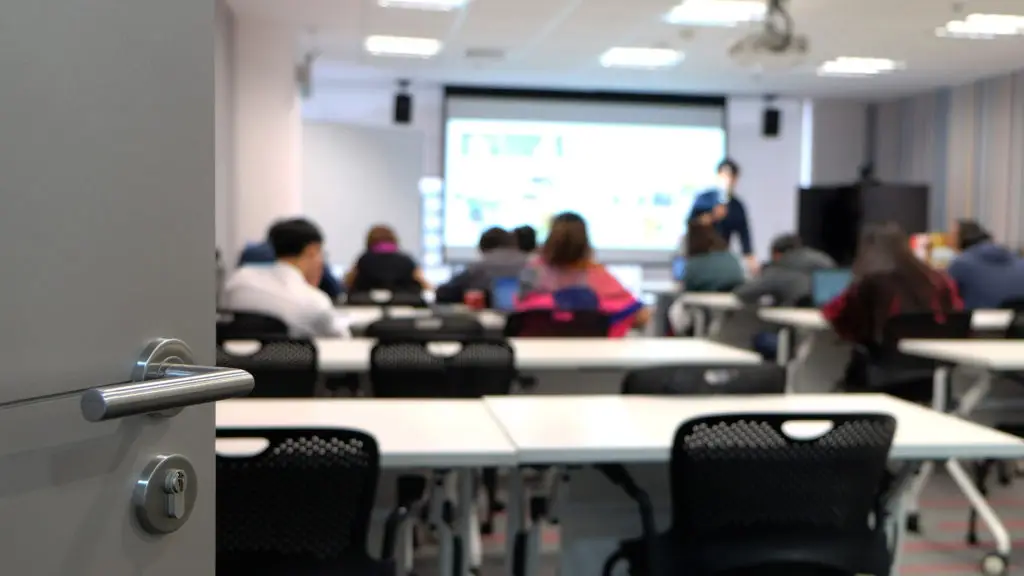“A Charter for Change,” Al Shanker, the president of the American Federation of Teachers, titled his column in the New York Times one Sunday some three decades ago.
Shanker had just returned from San Francisco, where 3,000 representatives from across the states had gathered for the union’s 70th convention.
“The main idea that gripped the delegates was the prospect of having hundreds, even thousands of school teams actively looking for better ways—different methods, technologies, organizations of time and human resources—to produce more learning for more students,” Shanker reported. “The idea is to encourage risk-taking and change. But what name could capture all of this? The best answer so far is ‘charter schools.’”
Charters, he hoped, would function as a vast research and development arm of public education, their successes later replicated in traditional public schools. “Over time,” Shanker concluded his column, “we can expect schools to stimulate a different and more effective school structure.”
We should not expect quick results, he cautioned. It might require “several decades.”
Minnesota passed the first charter law three years after his column ran. Over the ensuing three decades, charters across the states essayed an extraordinary diversity of models, from “back to basics” to tech-enabled personalized learning, from doubling teacher salaries to providing students individual tutors, from enforcing military discipline to cultivating student self-esteem.
At last came success.
In the last decade, large nonprofit networks of charter schools—among them IDEA in Texas, Noble in Chicago, and Mastery in Philadelphia —posted academic results far outstripping that of their urban districts.
Stanford’s Center for Research on Education Outcomes found charters educated proportionally more students in poverty than district schools and twice as many black students. The large networks Uncommon Schools, KIPP NYC, and Achievement First delivered on average the equivalent of 127 additional days of instruction in math and 66 days in reading each year compared to their district counterparts.
*
And so we come to what seems to me to be the essential questions for the next decade of school reform: Can large urban districts host these models? And if not precisely them, possibly new district schools capable of generating comparable results?
Given charters’ exhaustive experimentation, let us posit that these new schools would have similar components and requirements.
Is the district “operating system” compatible with these requirements? And if not, how does the political lift of remedying that incompatibility compare with that of expanding the charter sector itself?
As nothing matters more than the quality of teachers, consider first their human capital model. As I explored in a recent piece, high-performing urban charter networks rely upon massive ongoing investment in the professional development of their leaders and teachers. In New York’s top networks, teachers attend up to four weeks of training in August, gather for daily grade team meetings, and accept to be live-coached in front of their students. Four days a week they work a long day so that one afternoon a week, with students dismissed early, they can engage in additional training and practice.
By contrast, teachers in New York City district schools can only be gathered for one day before the first day of school, teachers may be observed only twice a year, and the work day is limited to 6 hours and 20 minutes.
Resolving any of these many incompatibilities would run afoul of the district’s collective bargaining agreements, clotted with work rules, or the district’s thicket of administrative rules. To the union, such fixes would be apostasy, a threat to solidarity: all members are interchangeable. For one teacher to offer to do more or to take on new responsibilities is a violation of every other.
High-performing networks recognize that the school year proceeds at a blistering pace; excellence requires what Success Academy calls a “maniacal level of noticing and addressing.” When the year launches, administrators watch every classroom like hawks; every hour that a room isn’t working is an hour of student learning lost and irreplaceable. Within days, to get students back on track, teachers may be assigned to another room or school, be made the second teacher under a veteran, or ultimately let go.
By contrast, in New York, it takes a principal some two years of effort and $200,000 in legal fees to remove a teacher; accordingly, few try.
(Can we imagine any high-performing enterprise acceding to such rules? Would the tech industry acquiesce to a regimen where their engineers’ code could not be evaluated, their work supervised, or their employment terminated? Such constraints would be risible. Yet we impose them on society’s most important function—the education of the young.)
As important, the organizational culture of districts is also likely to be incompatible with high-performing networks’ models. There, both staff and parents have chosen the school; they subscribe to its singular vision and share its values. They joined the network because they want to put student results first and accept that every action will be in service of this end. When a struggling teacher is reassigned to learn from a veteran, or a successful teacher is asked to report to another school that needs her more, neither is surprised. They bought in.
This characteristic of successful schools—let’s call it “subscription”—is difficult to nurture in big-city districts. Not only does collective bargaining promote bureaucracy; its adversarial premise—that, unless protected, staff will be exploited by management—also creates a culture in which many staff feel suspicious and chronically beleaguered.
*
As we look ahead to the next decade of school reform, the dispiriting truth is that applying the research and development lessons of charters to districts is like trying to watch Netflix on Shanker’s Commodore 64. It won’t work.
Every individual enhancement to the operating system—say, increasing the number of days of professional development before schools reopen—will bear a vertiginous price tag at the bargaining table; together, the cost of the required fixes will be a political nonstarter. Few superintendents will fight for them, for it would be to concede that their present operating system—the rules by which their schools operate—is inimical to the creation of strong schools.
Even districts in states such as North Carolina, Texas, and Michigan that prohibit collective bargaining for teachers or expressly limit its scope will struggle to host the new models. Sweeping changes in district policies would be required, for which there is simply no precedent.
Here and there, large districts undertake piecemeal reforms—say, a new plan for teacher coaching—across a sprawling district, but invariably the change is toothless, the product of caution and compromise. They are met by staff with cynicism and apathy, linger as a box to be checked, and wither away.
As important, these piecemeal reforms undermine school coherence. Great schools result from a tight assembly of many elements working in concert, each informed by the school’s distinctive values, beliefs, and programs. A school’s coaching model must be crafted to fit its chosen pedagogies, which in turn will inform its qualification and cultivation of the teachers it seeks to attract. Each piece must fit with the next.
Districts could establish district-run “autonomous” schools that aim to replicate the structural advantages of charters, ideally as part of a larger district “portfolio” strategy advanced by my colleagues Paul Hill and Robin Lake. Portfolio, with a unified enrollment system, accountability for results, pupil-based funding, closure of the worst schools, and, crucially, a supply of new schools, can ratchet up student achievement. But absent the existential imperatives created by a burgeoning charter sector or impending state takeover, districts will fail to create true charter-like conditions in the new schools.
That’s what David Osborne found in his study of “charter-lite” programs in Boston, Los Angeles, Memphis, and Denver. The schools’ results lagged behind those of charters and were often no better than those of the district. The arrangements are also fragile. When superintendents leave, district bureaucracies reassert themselves and, resenting the privileges given the autonomous schools, work to dismantle them.
The striking—and telling—exception is Indianapolis. The district’s “Innovation” schools are exempt from the same laws and regulations as charters. As Robin Lake has noted, they function outside of the district’s union contacts, and are subject to performance contracts of five to seven years. The schools enroll proportionately more students of color and students from low-income families than Indianapolis Public Schools, yet have posted significantly higher academic growth.
But if Indianapolis had not had a thriving charter sector, the district’s Innovation schools would never have come about. The National Alliance for Public Charter Schools ranks Indiana’s charter sector the strongest in the country, and a third of public school students in the city attend charters. By contrast, the state gave nearly half of the district schools a D or F grade. Charters placed enormous pressure on the district to get better. In turn, the collaborative partnership of enlightened district, city, and state leaders—including the current Indianapolis superintendent, Aleesia Johnson, a former KIPP principal—spurred the further growth of effective autonomous schools, charter and Innovation alike.
*
“It is almost impossible to change an entire school system,” Shanker acknowledged in a speech to the National Press Club the same year his column ran. “There has been no shortage of reformers. Every couple of years the reformers come along. We’ve got to admit to ourselves that even though people have known that the system doesn’t work, and even though there have always been reformers, it hasn’t changed and it hasn’t changed because we’re trying to change everybody at the same time.”
He was right. Here and there maverick superintendents will courageously drive sustained gains in big districts, their reforms guarded from revanchist administrators by their nonprofits allies. More often, brief flares of progress will be quickly extinguished by successor administrations. Every few years superintendents will rotate from one big system to the next, hailed in their new cities as reformers despite having left faint trace in their last. The kabuki will continue.
Shanker saw the way out. If his proposal was adopted, in time, he said, “we’ll be able to talk about thousands and thousands of schools in this country where people are building a new type of school that reaches the overwhelming majority of our students.”
And so we return to our imperative for the next decade of reform: to continue to grow the charter sector. Given the daunting political obstacles, some may find the project fanciful. But we might soberly conclude that it is our best hope for improving education for all students.





